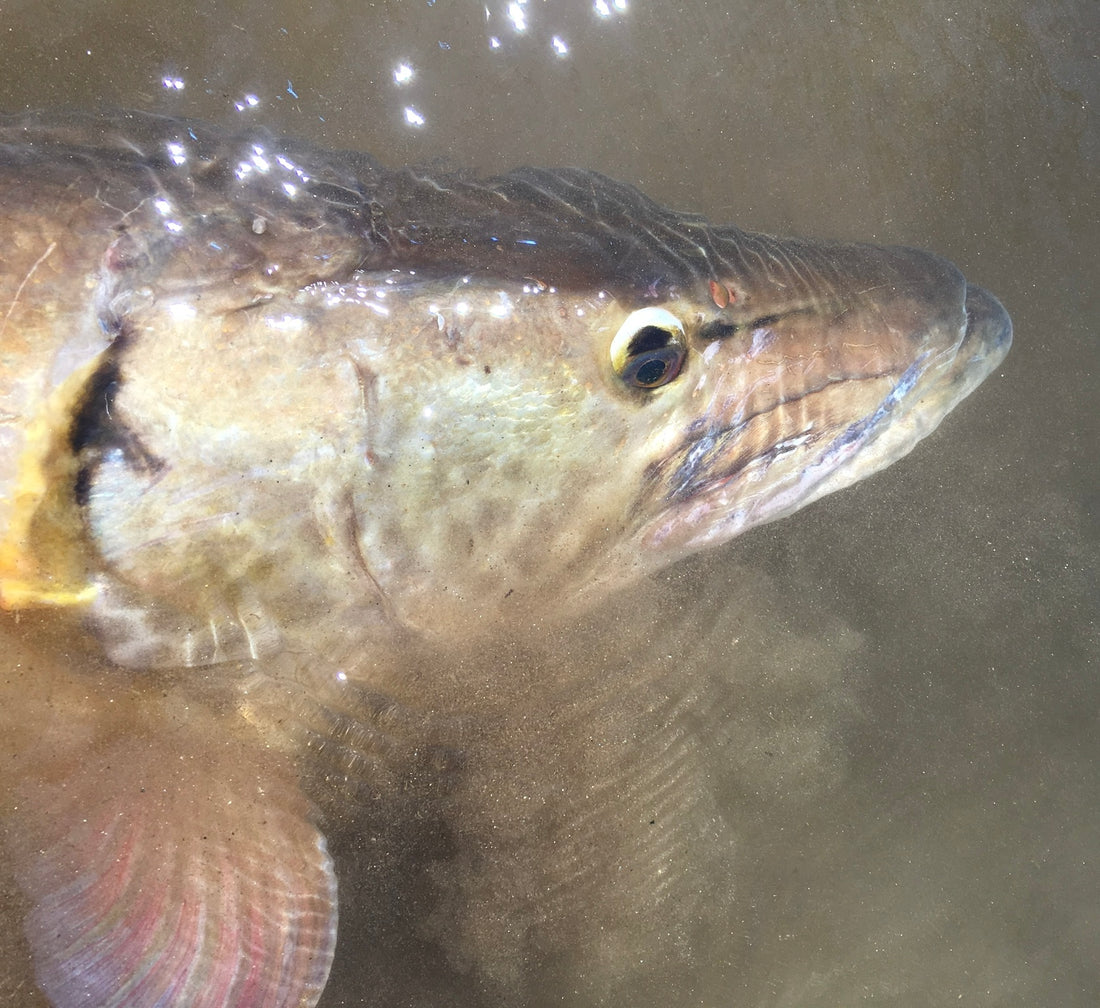Winter on the French Broad River (FBR) brings a unique charm to Muskie fishing. Mornings frequently begin with a crisp chill, generally warming by 5-10 degrees in the afternoon with the river transforming into a serene and promising fishing ground. In these cooler waters, patience and precision with your casts and techniques are crucial. A mindful approach with slower retrieves with flies or lures that kick to the side, giving a slo-mo side shot for a hard and fast ambush strike is the ticket!
Winter’s overcast skies are your fishing ally. Capitalizing on the days just before a weather front, especially when rain is in the forecast, can lead to some of the most memorable outings. Note: there are no bad weather days, only opportunities missed due to unsuitable gear. Dress to stay warm and dry to significantly increase your odds.

During winter, the FBR sees its baitfish (primarily suckers), forming schools. These gatherings are a beacon for Muskie. Focusing on areas where these school are found is huge. These predators found them long before you did and call these areas their winter home. Pick apart the neighboring deep pools with structures from different angles. They’re there. Trust me. Strategically present your fly/lure around structures and keep it close to the bottom. At the end of your retrieve, enhance your chances by adding an extra figure-eight after each cast, ensuring you don't overlook any slow-following Muskie that’s late to the party. In this serene, cold setting, every well thought through cast has the potential to be a winner. It only takes one fish.
Our current FBR conditions…
We’re still facing a draught here in Western North Carolina. In spite of recent rains, our water tables are still down about 12 inches. It may not sound like much, but get out on the river and you’ll see. Water levels are low, exposing mud banks and downfalls. The 100 year average Cubic Foot per Second (CFS) is around 900. We’re fishing in 250-300 CFS. The one bright side is that this has pushed Muskie into confined areas, creating denser populations in specific spots. Such concentration allows for more targeted fishing. Lets go!


